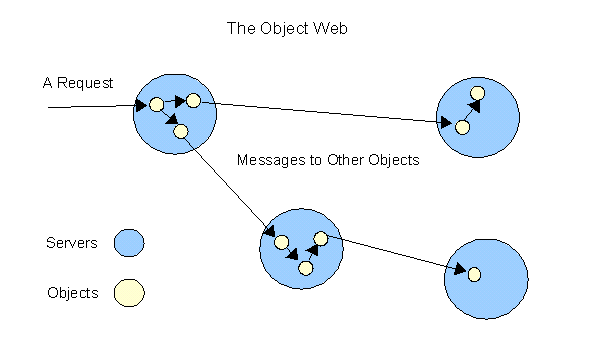- Early Definitions / Visions of the Semantic Web
- Authoritative Definitions of the Semantic Web
- Vision #1 - The Semantic Web as Advanced Search Engines
- Vision #2 - The Semantic Web as a Wiki on Steroids
- Vision #3 - The Semantic Web as a Semantic Network
- The Semantic Web is NOT Web 2.0 ... Well, Not Exactly
- Issues
Early Definitions / Visions of the Semantic Web
The Object Web
The ideas of a "Semantic Web" had been around in various guises for several years prior to the Scientific American article. One precursor of the Semantic Web was the idea of "Web Objects" or the "Object Web" kicking around in the mid-1990s. The OMG was a big part of that phase of development of the technical infrastructure.
It really began to take off when the World Wide Web Consortium (W3C) became the authoritative source of standards for what was often called the Object Web. From the standards emerged new technologies such as CORBA and Java, enabling something like a web of communicating objects running on different servers. The terms "distributed computing" or "distributed systems were often used in this context.
While the technology can be quite complex the basic vision is simple enough.

Different chunks of software running on different servers send each other messages, not too complex in principle, however devilish the details might be. Much the technology of "Service Oriented Architecture" is built upon the foundation of the original OMG object standards of the 1990s. The difference is the shift from objects to services. The focus is on the interface between the pieces of software rather than whether the software is an object or not.
